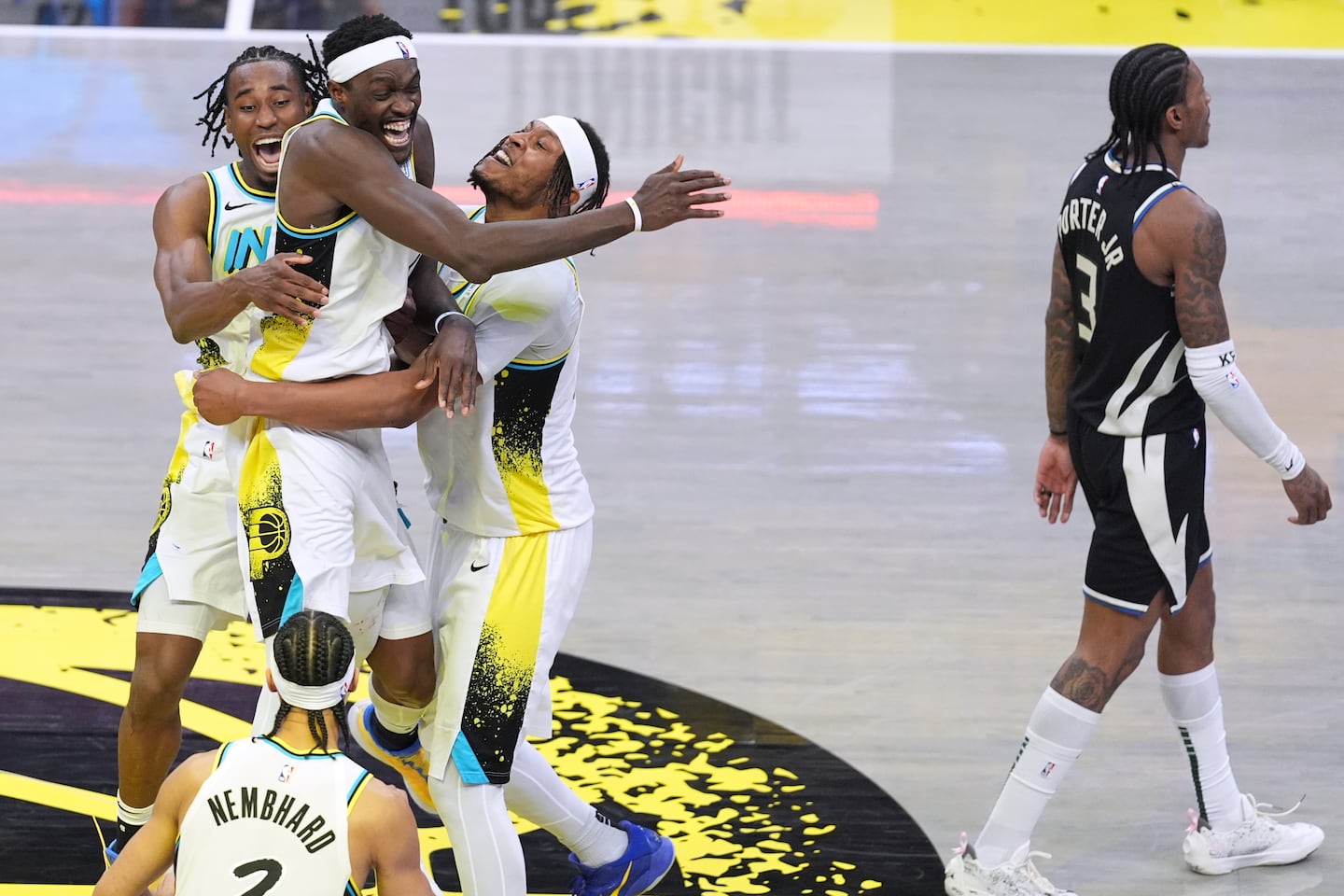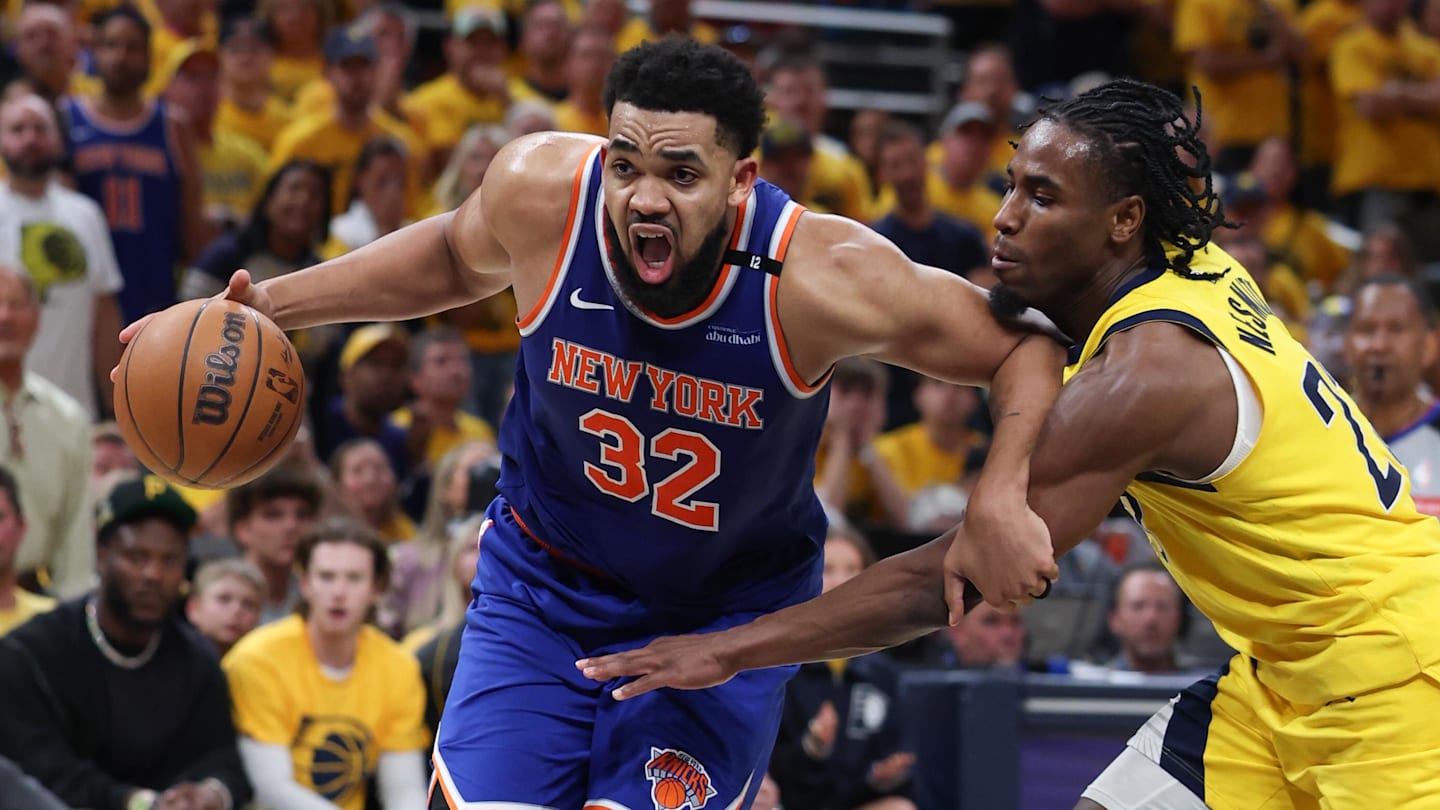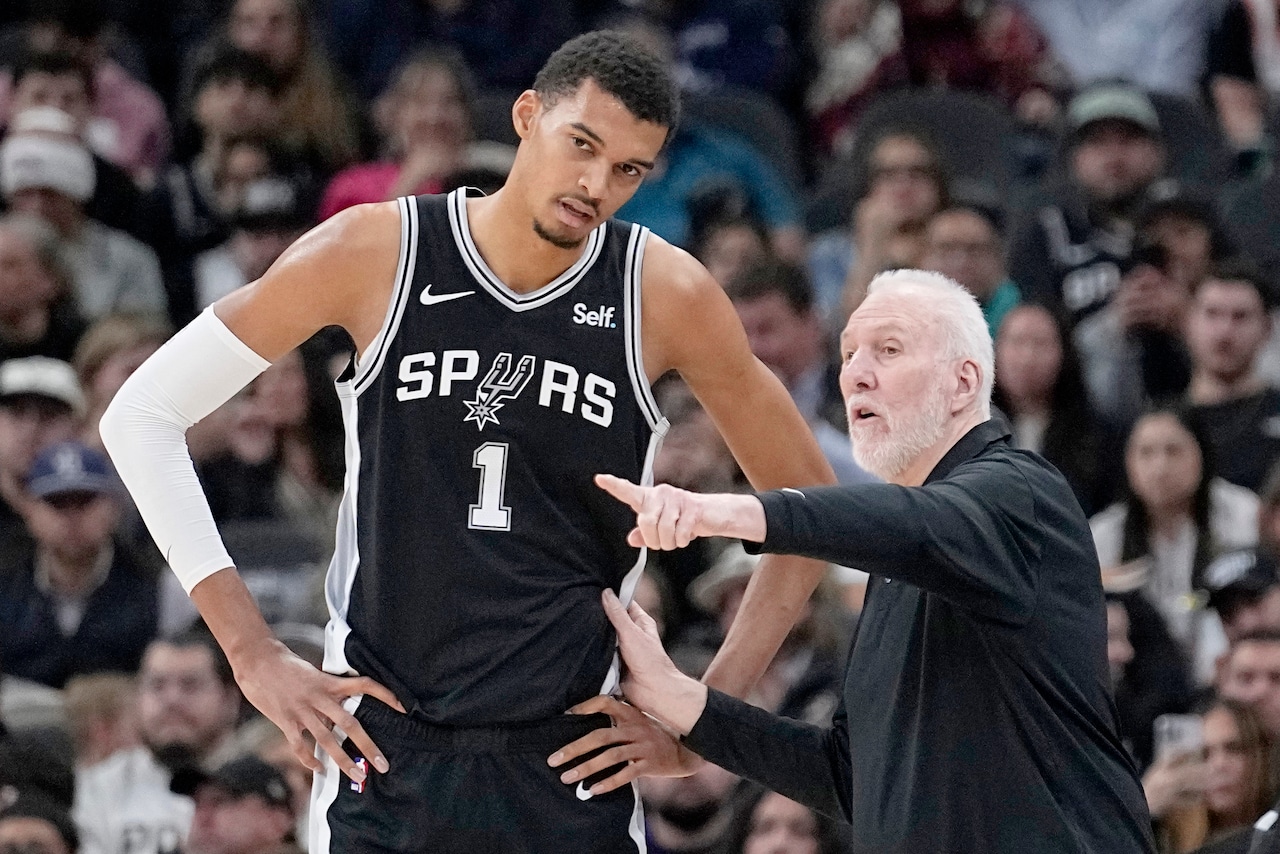Over the 14 minutes and 23 seconds it took the Pacers to come back against the Bucks in Game 5 of their first-round playoff series, their star guard, Tyrese Haliburton, knew he and his team were in the middle of a moment.
The Bucks were scrapping to stay alive, down, 3-1, in the series. They built a 33-13, second-quarter lead. Quickly and painfully, the Pacers made that lead disappear.
Everything that could go wrong for the Bucks in that short span did. They missed 8 of 11 3-pointers, committed two shooting fouls, missed four free throws, and turned the ball over three times.
Meanwhile, the Pacers made 14 of 27 shots, including 6 of 10 threes, and went 5 for 5 from the line. Andrew Nembhard gave the Pacers their first lead on a stone-cold bucket, stunning A.J. Green with a between-the-legs snatch-back and drilling a 30-footer that made it 52-51.
Being down by that much that early didn’t bother the Pacers.
“We just kept talking about the wear-down effect,” Haliburton said. “They started hot, but let’s just wear on them and wear on them.”
The Pacers still needed the minor miracle of an 8-0 run in the last 34.5 seconds to pull off the win and close the series. But for a team that erased four 20-point deficits during the regular season, climbing out of a hole was the easy part.
“I’m still kind of trying to process it,” Pacers big man Myles Turner said. “That was one of the craziest games I’ve personally been a part of. We never stopped believing . . . That’s a perfect precursor to what the playoffs are. Now, granted we didn’t want to be in the position of being down 20, but if we just so happened to be there, we knew how to manage it.”
The Pacers did it again against the Cavaliers in the second round, and they’ve personified a postseason during which huge collapses and monumental comebacks have seemed routine.
The NBA Finals start Thursday when the Pacers head to Oklahoma City for Game 1. At different points on their paths to a possible title, both teams have had to claw back after being down 20 points.
The Thunder made a 29-point Grizzlies lead disappear in the first round.
The Knicks came back from three 20-point deficits (twice against the Celtics in the second round, then against the Pacers in the Eastern Conference finals).
Throw in the Nuggets, who blew a 22-point lead to the Clippers in the first round, and that’s seven 20-point comebacks ― easily the most in a single postseason since the NBA began tracking play-by-play data in 1996-97.
It’s a feeling the Celtics know all too well. No team in the play-by-play era has recovered from more 20-point deficits than the Celtics, who’ve done it five times. But they’ve also blown more than five.
This year, they were on the wrong end ― twice.
As much as injuries and illnesses affected the Celtics, there was no ducking the fact that they let huge leads slip away in back-to-back games on their home floor.
“The reality is we blew the first two games,” Celtics president Brad Stevens said during his playoff postmortem. “I realize ― we all realize ― these leads go fast.”
But how does it happen?
There’s the obvious: The teams that rally shoot the peel off the ball, get to the free throw line, and clamp up.
Over the 50 instances in which teams erased 20-point playoff deficits, the teams making the comebacks went from shooting 33.5 percent before their run to 55.7 during it. Their 3-point shooting percentage jumped from 20.7 to 48.4.
The teams that crumble go ice cold, commit wild turnovers in large numbers, and let everything go by the wayside on the margins.
The teams losing the leads go from juggernauts to can’t-get-rights. While they’re building their lead they shoot 55.9 percent from the floor and 50.5 percent from three. But when things start to spiral, those shooting clips dive to 33 percent and 23.9 percent.
There’s no denying the 3-ball is an equalizer, allowing teams to take chunks out of huge deficits. From 2017-25, teams went from taking 27 threes per game to 37.6. Meanwhile, 30 of the 50 teams that erased 20-point deficits did it over that span.
The 3-pointers might be the weapon, but usually the ammunition is turnovers. The teams that fall apart average 6.4 turnovers while they’re doing it.
Most coaches try to call a timeout to stop the bleeding ― on average the team watching its lead slip calls three timeouts while things are snowballing.
But there was, of course, one coach who chose to let his team sink or swim ― and it sank.
The 76ers built a 22-point, second-quarter lead on the Celtics in Game 2 of the Eastern Conference semifinals in 2018. Over the next 10 minutes, that lead vanished. Brett Brown didn’t call a single timeout.
Stubbornness aside, it’s not just that the huge leads are unraveling, it’s that they’re falling apart in a blink. The seven blown 20-point leads this year happened in an average of 19 minutes.
This year, the Nuggets, Celtics (twice), and Bucks blew 20-point leads in less than 15 minutes.
Last year, the Nuggets blew a 20-point lead to the Timberwolves in 10 minutes, and the Knicks blew a 22-point lead to the 76ers in 12.
No team in the play-by-play era has blown a lead faster than the Jazz in 2018, against the Thunder. They were up, 71-46, with 8:34 left in the third quarter. By the end of the quarter, it was tied. They ended up losing, 107-99.
Donovan Mitchell, the engine of the Jazz’s offense, pointed out what was obvious: “We stopped playing defense. We stopped getting back. Our offense got stagnant. They made adjustments and we didn’t make the right adjustments back.”
If there was ever a sign that the idea of a large lead is changing, it came in 2019, when the Warriors had their feet kicked up in Game 2 of their first-round series against the Clippers, up, 94-63, in the third quarter.
The lead seemed safe, but Warriors coach Steve Kerr admitted his team got too cozy, too soon.
“We stopped playing,” Kerr said. “As soon as we got up, 31, we shut down.”
Before the Warriors could blink, Clippers guard Lou Williams lit them up for 17 points in the third quarter and the Clippers recorded a stunning 135-131 victory.
It was the first time a team had overcome a 30-plus-point deficit in a playoff game.
The Warriors still reached the NBA Finals that year, but it would be hard to call that night a wake-up call. They blew a 20-point lead to the Rockets in the next round.
In the 18 years prior to that night in 2019, only 28 teams had climbed out of 20-point deficits, let alone 30 points.
In the six years since, 20 teams have made 20-point deficits disappear.
These days, it feels like 20 points ― the same as $20 ― doesn’t go as far as it used to. But make no mistake, epic comebacks and monumental collapses are still hard to pull off.
Of the 860 teams that have built 20-point leads in the playoffs since 1997, only 50 have let those leads slip away. In this year’s playoffs, on 35 occasions teams have gone up by at least 20. Six of those teams fumbled the bag and lost.
As much as the comebacks make it seem as if no lead is safe, on the whole, 20-point leads are still close to bulletproof.
But when a team does blow a 20-point lead? That’s when things get tricky.
Of the 50 playoff teams that have blown 20-point leads in the play-by-play era, 22 still won, while 28 lost. This season, they’re 1-6.
That kind of momentum is tough to slow. The only team to blow a 20-point lead this postseason and survive to tell the tale was the Nuggets in Game 4 of their first-round series against the Clippers.
So, how big does a lead have to be for a team to feel safe taking its foot off the gas?
No one’s come back after being down by at least 32, at least not yet.
Julian Benbow can be reached at julian.benbow@globe.com.



